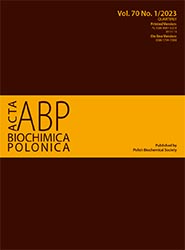Wilforol A inhibits human glioma cell proliferation and deactivates the PI3K/AKT signaling pathway
Abstract
Objectives: To study the anti-proliferation activity of wilforol A against glioma cells and its possible molecular mechanisms. Methods: Human glioma cell lines U118 MG and A172, human tracheal epithelial cells (TECs) and astrocytes (HAs) were exposed to various concentrations of wilforol A and evaluated for viability, apoptosis, and levels of proteins using WST-8 assay, flow cytometry and Western blot analysis, respectively. Results: Wilforol A inhibited the growth of U118 MG and A172 cells, but not TECs and HAs, in a concentration-dependent manner and the estimated IC50 were 6 to 11 μM after 4 h-exposure. Apoptosis was induced at an apoptotic rate of about 40% at 100 μM in U118 MG and A172 cells, but the rates were less than 3% in TECs and HAs. Co-exposure to caspase inhibitor Z-VAD-fmk significantly reduced wilforol A-induced apoptosis. Wilforol A treatment also reduced the colony formation ability of U118 MG cells and triggered a significant increase in ROS production. Elevated levels of pro-apoptotic proteins p53, Bax and cleaved caspase 3 and reduced level of the anti-apoptotic protein Bcl-2 were observed in glioma cells exposed to wilforol A. The expression of PI3K and p-Akt genes in the PI3K/AKT pathways were significantly downregulated in glioma cells treated with wilforol A. Conclusions: Wilforol A inhibits the growth of glioma cells, reduces the levels of proteins in the P13K/Akt signal transduction pathways and increases the levels of pro-apoptotic proteins.
Acta Biochimica Polonica is an OpenAccess quarterly and publishes four issues a year. All contents are distributed under the Creative Commons Attribution-ShareAlike 4.0 International (CC BY 4.0) license. Everybody may use the content following terms: Attribution — You must give appropriate credit, provide a link to the license, and indicate if changes were made. You may do so in any reasonable manner, but not in any way that suggests the licensor endorses you or your use.
Copyright for all published papers © stays with the authors.
Copyright for the journal: © Polish Biochemical Society.


